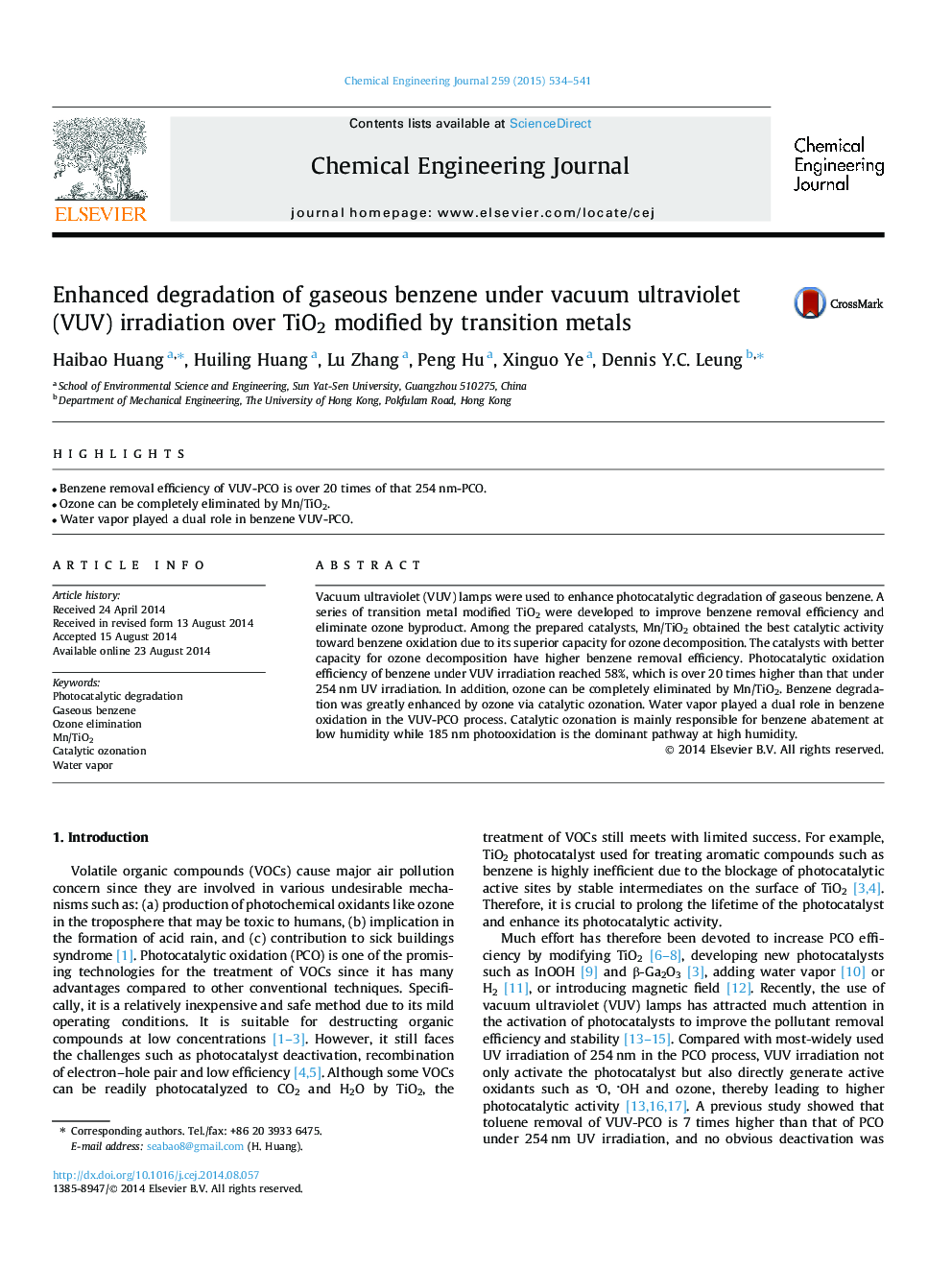| Article ID | Journal | Published Year | Pages | File Type |
|---|---|---|---|---|
| 6585885 | Chemical Engineering Journal | 2015 | 8 Pages |
Abstract
Vacuum ultraviolet (VUV) lamps were used to enhance photocatalytic degradation of gaseous benzene. A series of transition metal modified TiO2 were developed to improve benzene removal efficiency and eliminate ozone byproduct. Among the prepared catalysts, Mn/TiO2 obtained the best catalytic activity toward benzene oxidation due to its superior capacity for ozone decomposition. The catalysts with better capacity for ozone decomposition have higher benzene removal efficiency. Photocatalytic oxidation efficiency of benzene under VUV irradiation reached 58%, which is over 20 times higher than that under 254Â nm UV irradiation. In addition, ozone can be completely eliminated by Mn/TiO2. Benzene degradation was greatly enhanced by ozone via catalytic ozonation. Water vapor played a dual role in benzene oxidation in the VUV-PCO process. Catalytic ozonation is mainly responsible for benzene abatement at low humidity while 185Â nm photooxidation is the dominant pathway at high humidity.
Related Topics
Physical Sciences and Engineering
Chemical Engineering
Chemical Engineering (General)
Authors
Haibao Huang, Huiling Huang, Lu Zhang, Peng Hu, Xinguo Ye, Dennis Y.C. Leung,
